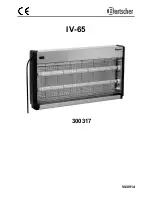
26
6 The sail
6.1 Adapting the sail to the Furlex system
To fit the Furlex system, an existing sail may need a number of modifications. The maximum luff length is
calculated as shown in Table 1 page 6 FLD-(F+E). Existing forestay length FLD as per Table 2, page 11.
”Cutback” for tack see table 1 page 6.
The luff tape must be compatible with the Furlex luff extrusion. See luff extrusion measurements
in table 1.
If the sail is to be fitted with UV protection, this is best placed on the starboard side. The tack of
the sail will then be in line with the luff grooves of the luff section when unrolled (see Chapter 6.4.2,
”Hoisting the sail”). If the sail already has UV protection on the port side, the tack will be turned slightly
to starboard. The free turn of the tack ring will function equally well.
Use webbing loops at the sail head and tack instead of eyes (cringles). The sail will then form
tightly round the luff extrusion when furling, and achieve a better shape when reefed.
It is most important that the halyard swivel is located so that the halyard satisfies the 5–10°
angle requirement. If the sail prevents the swivel from reaching the correct position, the luff
length needs to be adjusted.
IF THE SAIL IS TOO LONG: Shorten the sail, e.g. in conjunction with changing to a luff
tape compatible with Furlex.
IF THE SAIL IS TOO SHORT: Lengthen the sail by means of a wire pendant fitted to
the head of the sail. Attach the pendant directly to the sail by a talurit splice to prevent
unintentional removal, loss or exchange. All the boat’s foresails should be adjusted to the
correct luff length. See 1.5 page 6 (There must be a minimum distance of 50 mm between
the top of the halyard swivel and the top guard when the sail is fully tensioned.
















































